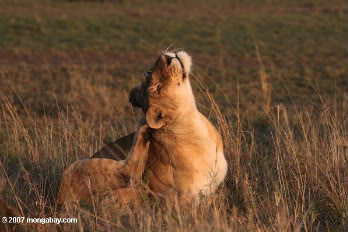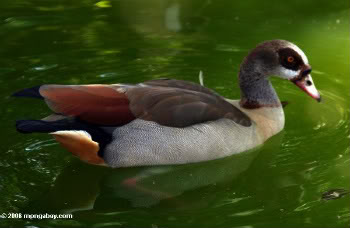After highly-publicized poisonings of lions in Kenya’s national parks, the Kenyan Parliament has begun addressing longstanding concerns regarding the pesticide Furadan.
Since 1995 Furadan has been used to illegally kill 76 lions, 15 hyenas, 24 hippos, over 250 vultures, and thousands of other birds in Kenya. These numbers are likely low due to under-reporting, according to Kenya-based conservation organization, Wildlife Direct.
Furadan is the trade name for Carbofuran, which is manufactured by Farm Machinery and Chemicals Corporation(FMC) in the United States. The deliberate poisoning of wildlife in Kenya by Furadan is often in retaliation for predators killing a farmers’ livestock. On the other hand, birds die from ingesting the pesticide off of crops.
 Lioness in Masai Mara in southern Kenya, a park that has seen its fair share of lion poisonings by Furadan. Photo by Rhett A. Butler. |
The killing of thousands of birds “were accidental poisonings related to the proper use of carbofuran,” writes Paula Kahumbu on the WildlifeDirect blog related to wildlife poisoning.
On Thursday the Kenyan Parliament took up the issue of banning Furadan. Some members of parliament were so upset over the continued killing of Kenya’s wildlife that they recommended suing FMC for damages. However, despite passionate speeches a full ban on the chemical has not yet occurred.
 The Egyptian goose has been killed by Furadan in ‘pick-up truck loads’ according to WildlifeDirect. Photo by Rhett A. Butler. |
In May of this year, the United States banned the use of Furadan on any crop intended for human consumption, since the pesticide is particularly dangerous to humans as well. However Philadelphia-stationed FMC has said it intends to keep making the pesticide to sell overseas and it plans to object to the EPA’s decision.
In Kenya Kahumba writes that “Furadan is said to be the pesticide of choice for pest control and is used to control moles, baboons, lions, elephants and even termites by uniformed farmers and pastoralists. Even when used according to the label, the EPA says that carbofuran is not safe enough for highly regulated American farmers, consumers and wildlife. If it’s not safe enough for people in USA, then it’s certainly not safe enough for poorly regulated and largely uneducated Kenyan farmers.”
Related articles
Huge cache of smuggled ivory represents up to 40 elephants
(04/29/2009) On April 25th two men were pursued by wildlife rangers from the Amboseli-Tsavo Game Scouts Association in Tanzania. The men escaped across the border to southern Kenya where they were caught by police, who had been tipped off by the wildlife scouts. The two men’s SUV contained 1,550 lbs (703 kilograms) of elephant tusks, representing a total of up to forty individuals according to the Kenyan Wildlife Service. This is considered the largest seizure in the region since the ivory smuggling boom of the late 1970s and early 1980s. The ivory is estimated at a value of $750,000 (or 60 million Kenyan shillings).
Famous Kenyan park experiencing large declines in wildlife
(04/21/2009) In Masai Mara, one of Africa’s most treasured parks, researchers have found significant, in some cases catastrophic, declines of wild grazing animals. In fifteen years six of seven hoofed animals—giraffes, warthogs, hartebeest, impala, topis and waterbucks—showed declines. The study published in the British Journal of Zoology confirms what has long been expected: wildlife populations in Masai Mara are plummeting due to increased competition with humans and livestock.
Africa’s lions are disappearing
(03/25/2008) The lion is Africa’s best known carnivore. Once widely abundant across the continent, recent surveys show that lion populations have plunged from over 100,000 individuals to around 23,000 over the past century. The reason? Lions are poisoned, shot, and speared by locals who see them as a threat to livestock. While lion populations in protected areas remain relatively healthy, conservationists say that without urgent measures, lions may disappear completely from unprotected areas. The Kilimanjaro Lion conservation Project is working to avoid this fate by developing practical measures to encourage coexistence between people, livestock and predators. Key to the effort is reducing livestock losses to lions. Leela Hazzah, a field researcher with the project, says the “Lion Guardians” program at Mbirikani Ranch in Kenya has proved remarkably successful: not a single lion has been killed since its inception in November 2006. The program employs Maasai warriors to monitor lions and help local communities prevent attacks on livestock.













